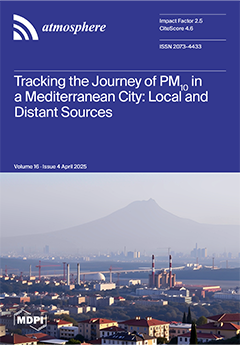The estimation of sensible heat flux (H) in drylands is important because it constitutes a significant portion of the net available surface energy. A model to estimate H half-hourly measurements for bare soils was derived by combining the surface renewal (SR) theory and the Monin–Obukhov similarity theory (MOST), involving the land surface temperature (LST), wind speed, and the air temperature in a period of half an hour, H
SR-LST. The surface roughness lengths for momentum (
) and for heat (z
0h) were estimated at neutral conditions. The dataset included dry climates and different measurement heights (1.5 m up to 20 m). Root mean square error (
) over the mean actual sensible heat flux estimate (H
EC), E
, was considered excellent, good, and moderate for E values of up to 25%, 35%, and 40%, respectively. In stable conditions, H
SR-LST and H
MOST values were comparable and both were unacceptable (E > 40%). However, the RMSE using H
SR-LST ranged between 8 Wm
2 and 12 Wm
2 and performed slightly better than H
MOST. In unstable conditions, H
SR-LST was in excellent, good, and moderate agreement in 3, 6, and 5 cases, respectively; H
MOST was good in 3 cases; and the remaining 11 cases were intolerable because they required site-specific calibration.
Full article





